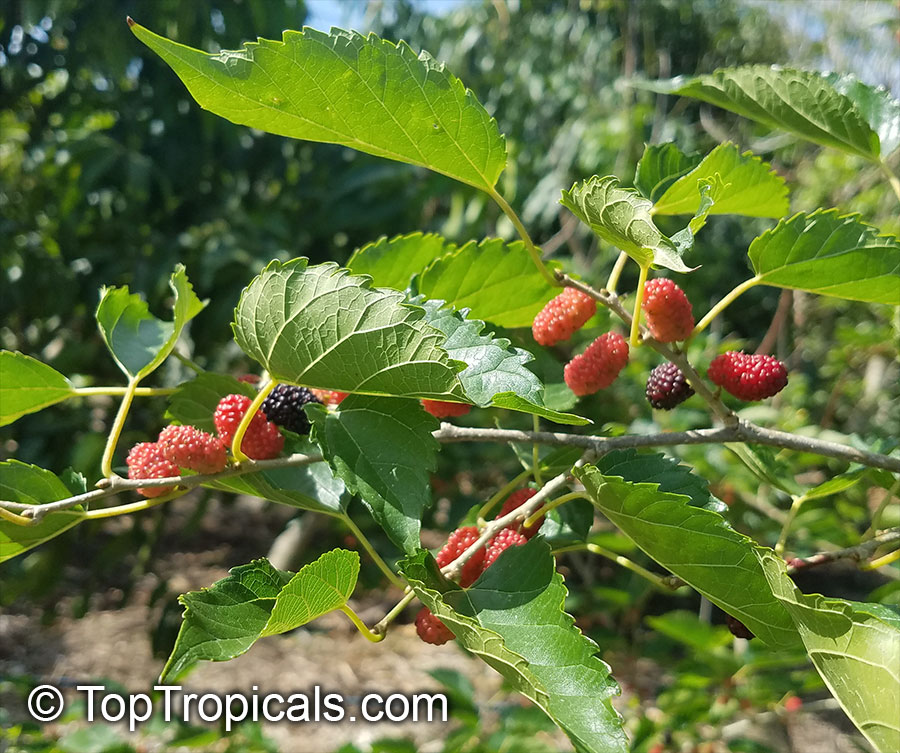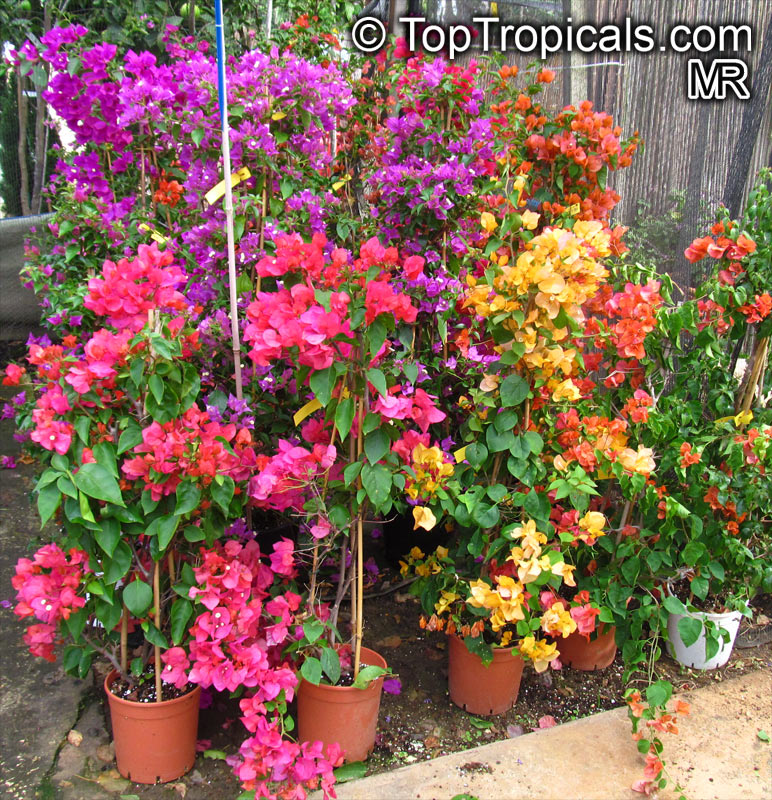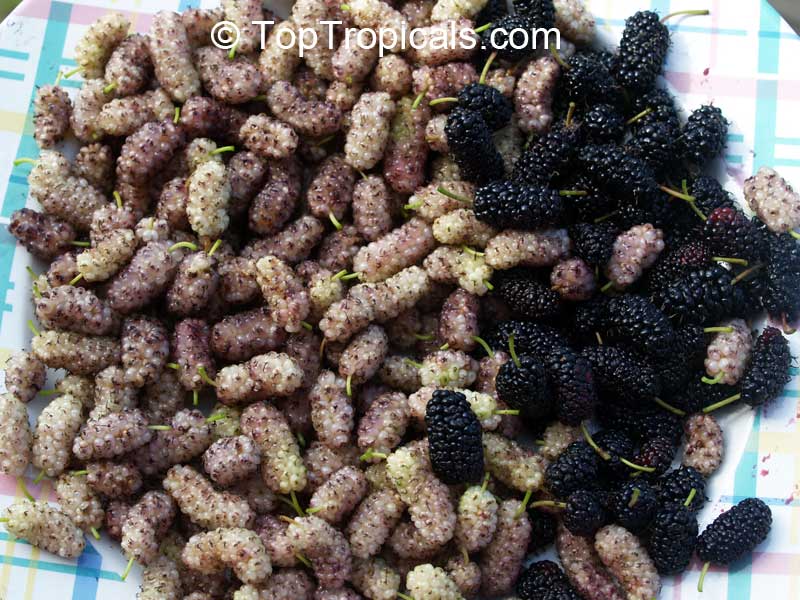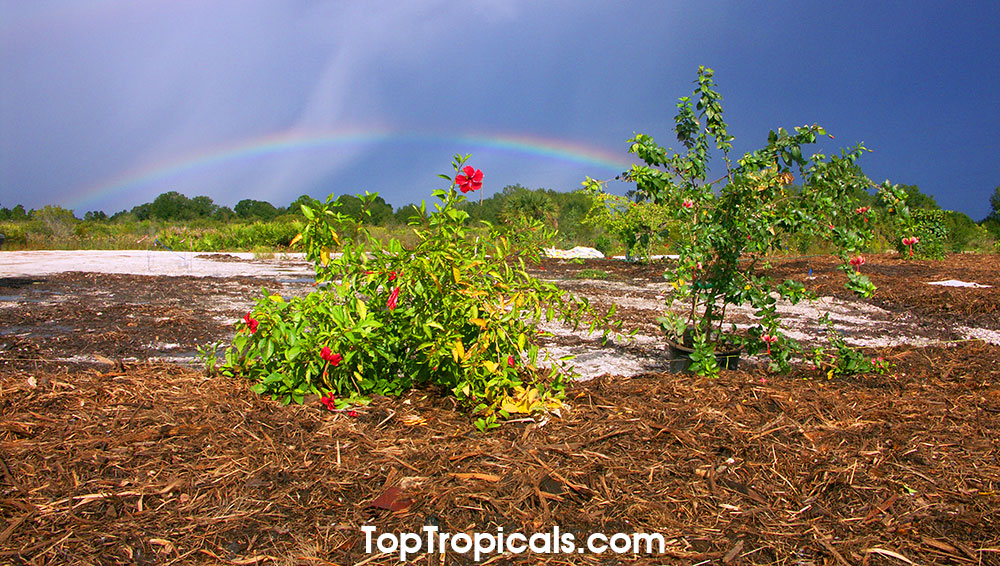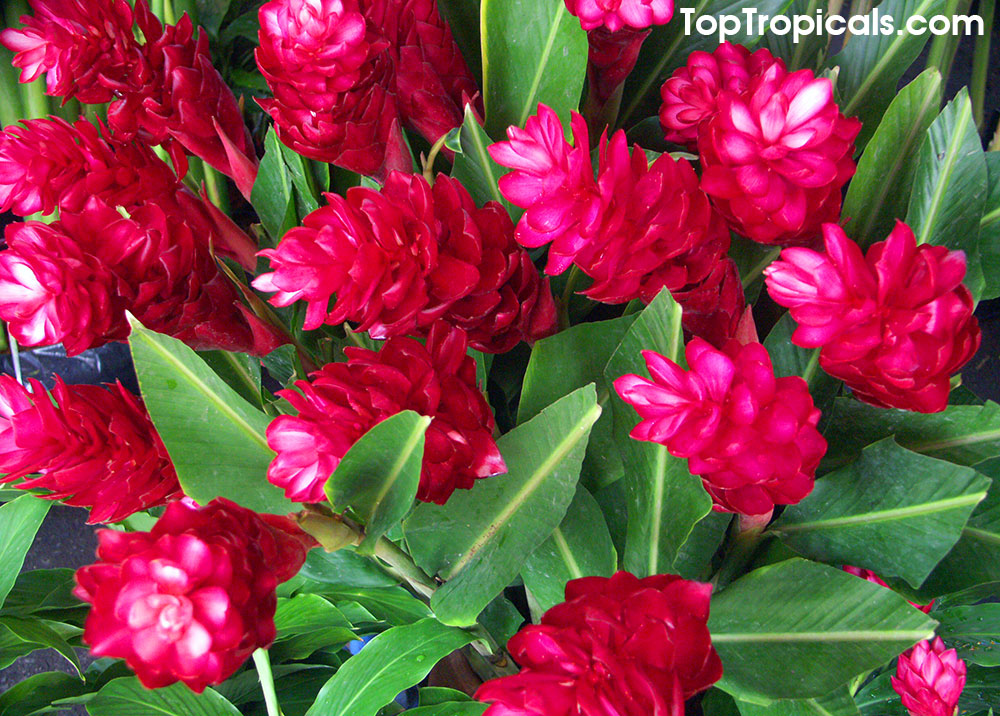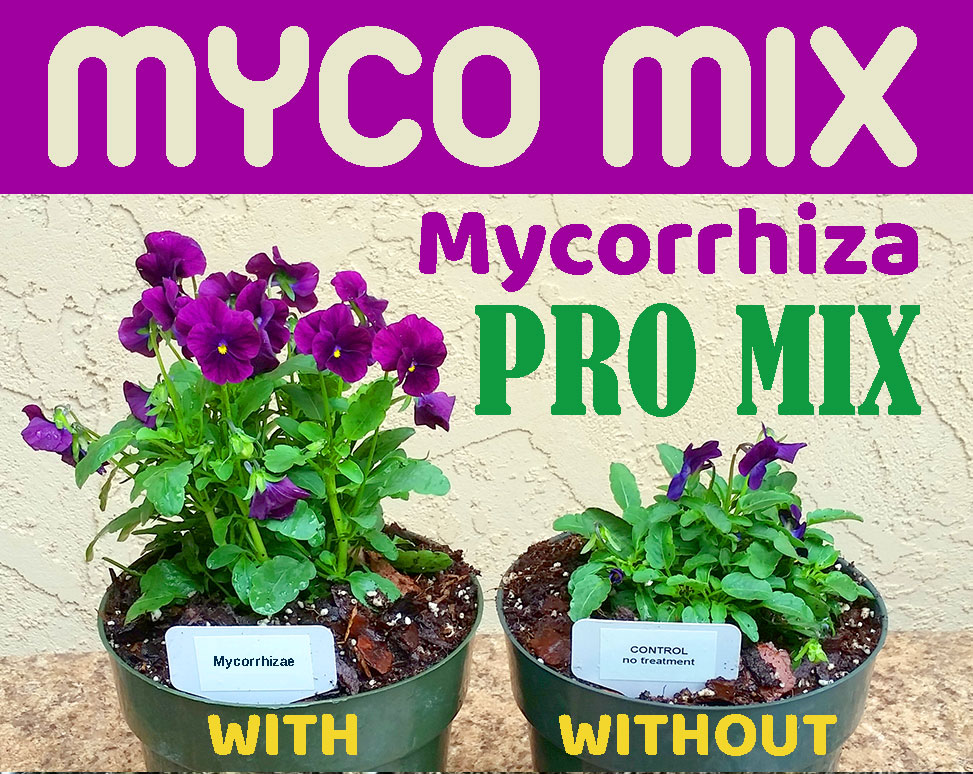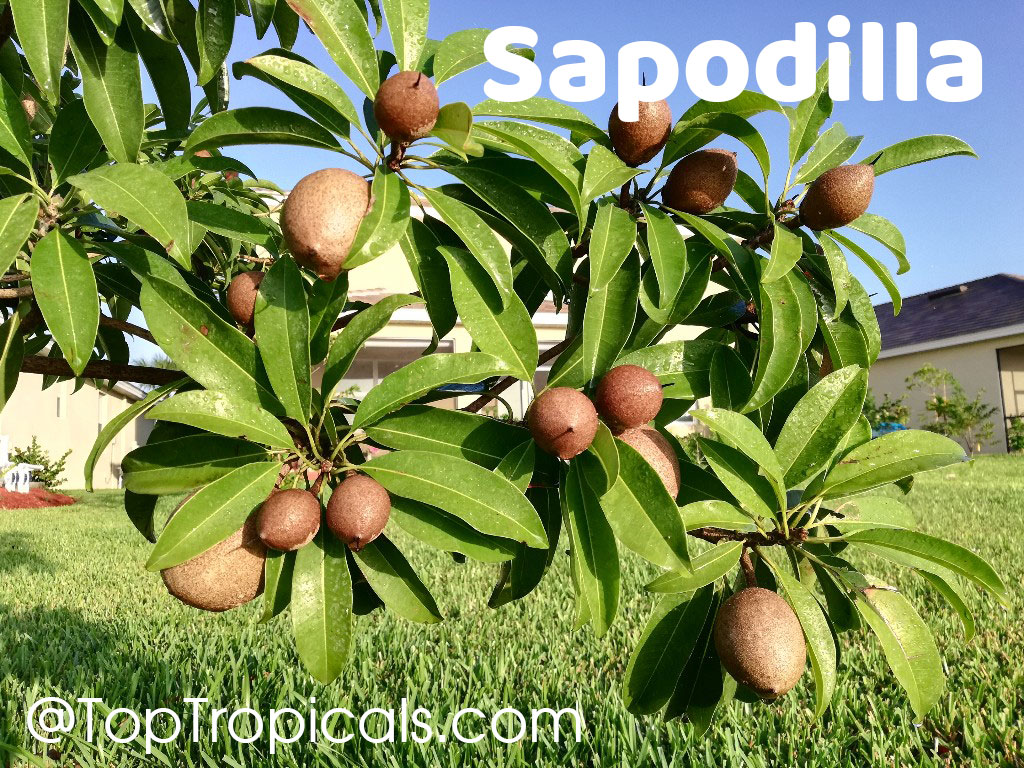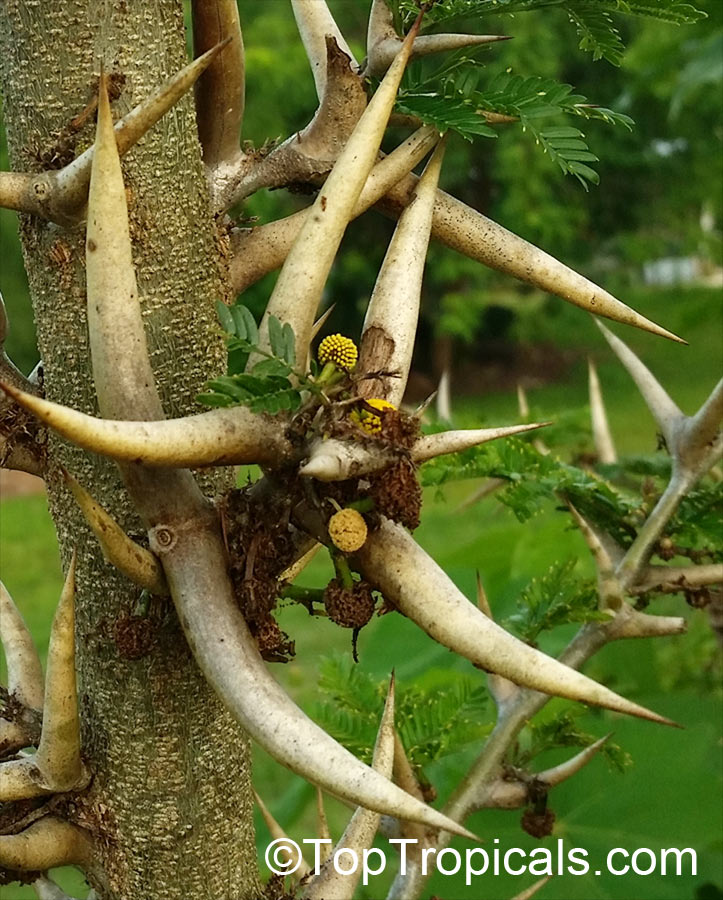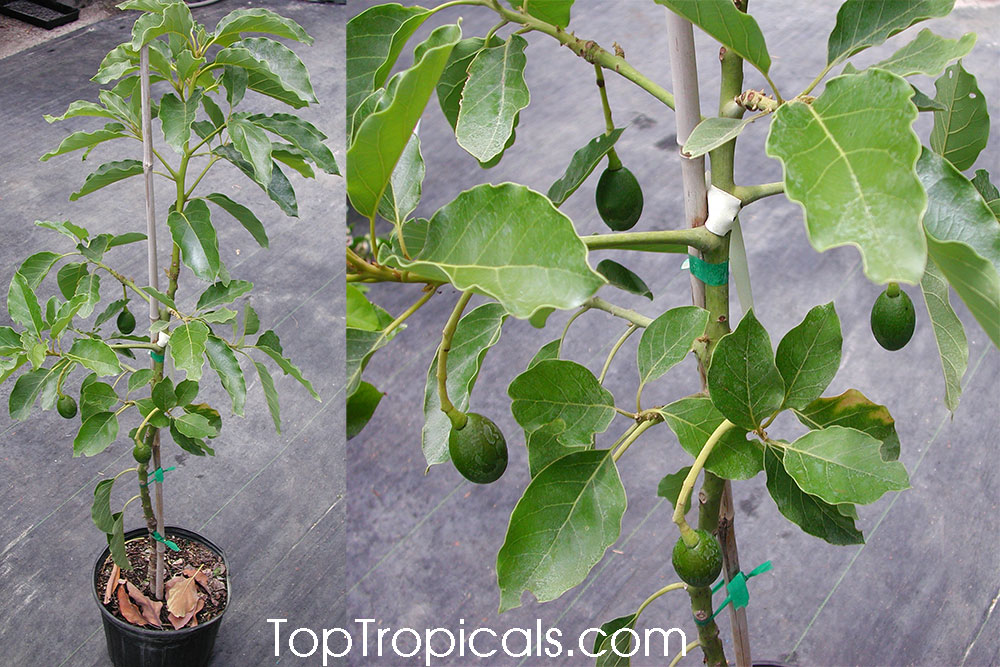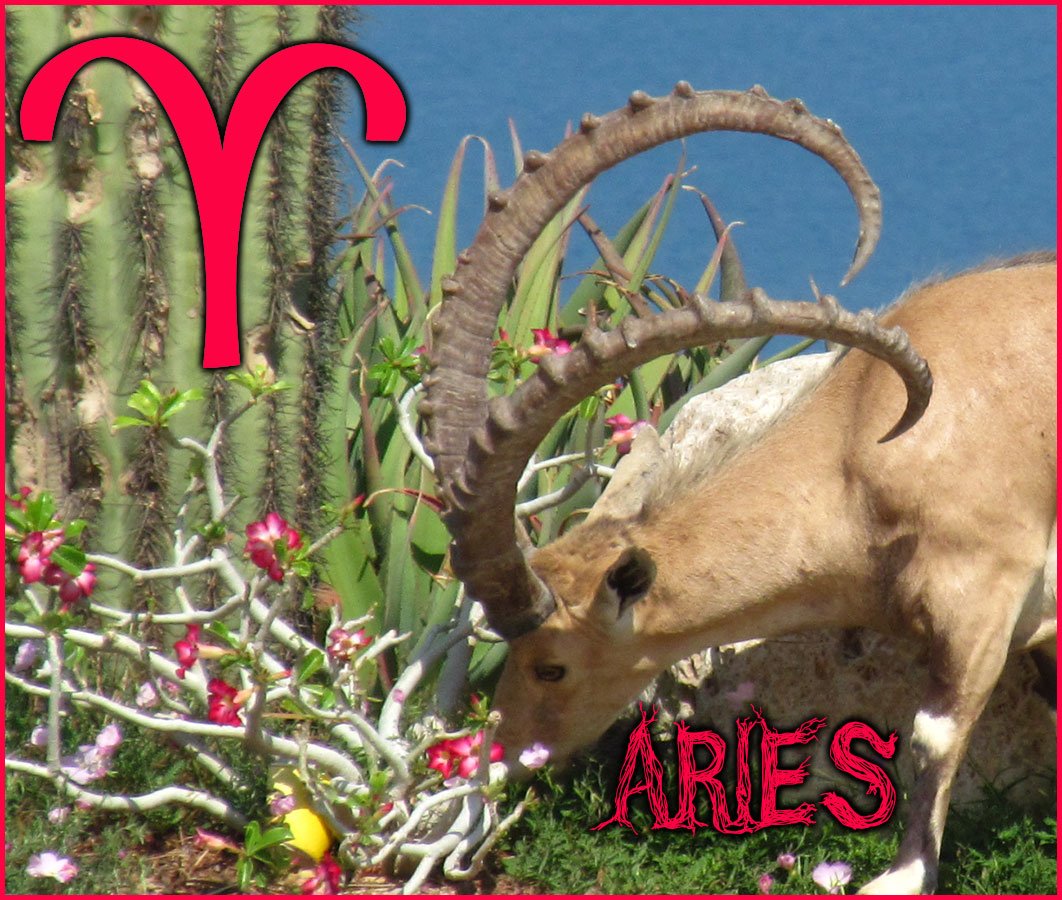Garden Blog - Top Tropicals
Date:
More about Mulberries
Customer comment on our Mulberry column in the previous newsletter:
...I planted a Himalayan mulberry, Morus macroura, about six years ago.
For several maddening years, it shot only very long, un-branching tentacles
out there, and it resisted my efforts to force some branching by pruning. It
would send another long, reaching shoot from the tip of the pruned branch,
with NO laterals. Several times, it did this. Finally, two years ago, it broke
buds that looked like they meant it all along those long branches, and in one
season, it fluffed out. The next season it elaborated on this, acting much
more like a proper tree. The fruit is fabulous, three or more inches long, very
sweet, with a rich berry flavor that's more raspberry than mulberry. I
guess it just needed more time. My understanding is that mulberries don't
really like to be pruned, but it needed to happen in this case, along a driveway,
so I reigned it in, and now it's a treasure. Be patient.
Cheers, your admirer, C
Check out our Mulberry trees.
Date:
Secrets of Happy Bougainvilleas
Q: When I visited Hawaii I saw their everblooming bougainvilles, flowering non-stop! How come our bougainvilles in Florida are not flowering as much? Is there any special secret to make them bloom?
A: Bougainvilleas prefer drier climate and especially drier summers. Florida summers are rainy and humid. The steaming greenhouse conditions are favorable for most tropical plants (except desert plants like most cacti). Bougainvilleas also grow vigorously in Florida heat and frequent rains, but most cultivars prefer dryer conditions for profuse flowering. These are a few tips that can help you grow happy Bougainvilleas and enjoy their showy flowers even in humid climates:
- In Florida, Bougainvilleas bloom mostly in Winter. If you are a
snowbird, this plant is definitely for you!
- Choose sunny, dry, and elevated location for Bougainvilleas, never a
low spot and never a shade spot. Give it as many hours of sun as possible.
- Use only well-draining soil. Usually, sandy soils work well when
mixed with some compost. If your soil is too heavy, add soil conditioners like
perlite, bark, sand.
- Take advantage of cultivars that are well adapted to humid climates:
Dwarf
Everblooming Pixie, Thornless B. arborea.
- Remember Bougainvilleas are the easiest and the most rewarding potted
plants.
- Use bloom boosters along with well-balanced slow release plant food.
We recommend these: Pink-N-Good flower booster and smart-release granulated Tropical Allure.
- Do not overwater and keep the plant on a dry side.
Date:
Mulberries - biggest, sweetest, and compact...
Q: What is the difference between Pakistani and Australian Mulberry plants? Would one be better suited for South Florida backyard? Can one be maintained/pruned to be a tall shrub vs a large tree? Which one has the sweetest fruit? Thank you for the previous plants we've purchased from you. They're all doing great.!
A: These two varieties are very similar indeed.
Both fruit are very large. Var. Pakistani fruit is a little longer than var. Australia and the tree is a more vigorous grower, but they both are
very sweet, even before the fruit fully ripen. Both trees are a good choice and
start fruiting at a young age.
We've had Australia in the ground in our garden for 4 years by now and
for some reason, it has been very slow growing which is normally not the case
with Mulberries. Maybe it is not fully happy with FL humid conditions.
There are two Mulberry varieties that can be maintained as bushes: Issai
and Dwarf
Everbearing. However, even vigorous Mulberry trees respond well to
pruning and can be kept compact for easy harvesting. Just make sure to prune before
the flowering season starts; here in S Florida Mulberries start flowering in
March, and fruit start ripening during April-May.
Check out our Mulberry trees.
Date:
The Great Green Wall - one plant at a time
The Great Green Wall is an African-led movement with an epic ambition to
grow a 7775km (4831 miles) natural wonder of the world across the entire
width of Africa.
A decade in and roughly 15% underway, the initiative is already
bringing life back to Africa's degraded landscapes at an unprecedented scale,
providing food security, jobs and a reason to stay for the millions who live
along its path.
The Wall promises to be a compelling solution to the many urgent threats
not only facing the African Continent, but the global community as a whole -
notably climate change, drought, famine, conflict, and migration.
Once complete, the Great Green Wall will be the largest living structure on
the planet, 3 times the size of the Great Barrier Reef... Continue reading...
You don't have to live in Sahara to make the difference. To keep our Planet green - start planting now!
Date:
Dwarf Red Ginger - more than just a pretty face
Q: I've just recently moved to Florida from North Carolina. I don't know much about tropical plants. Can you perhaps suggest an easy and pretty flowering plant for a beginner which I can plant around my garden pond for a tropical feeling?
A: For adding that tropical look to your garden, few plants beat
beautiful ginger! Alpinia purpurata, the Dwarf Red Cone Ginger with its bright red floral
spikes and lush, lance-shaped foliage is no exception. This striking
perennial will add a tropical effect to your garden that will definitely take your
breath away.
The Dwarf Red Cone grows between 3 and 4 feet tall and blooms 8-9
months of the year! The blooms will hold on the plant for up to 3 weeks! It makes
a very attractive and distinctive backdrop for other plants.
Red Cone Ginger likes partial shade and moist, humid conditions, but
will tolerate full sun. It is fast growing, easy to grow and resistant to
disease, heat, and insects. The plant is a wonderful accent in a garden and works
well as a focal point specimen, show-stopping when planted around garden
ponds or near entryways. This ginger also works very well in containers and
planters. Either in mass plantings or smaller groups, all gingers add tropical flair which never disappoints.
In addition, the beautiful flower spikes make for great, long-lasting
cut flowers and is an interesting addition to bouquets.
An added bonus? Dwarf Red Ginger is super easy to propagate. If stems
are cut at the base and placed in water, they will generally root within a few
weeks. Eventually, you can make a whole flowering hedge just from one
plant!
Who does not like a plant that is non-fussy and not only beautiful but easy to grow? Dwarf Red Ginger is more than just a pretty face!
To keep this plant happy and blooming, give it some food: Broad Leaf Plus - Ginger-Heliconia-Banana Booster.
Date:
Magic mix for stubborn plants
Myco Mix - magic mix with Mycorrhiza
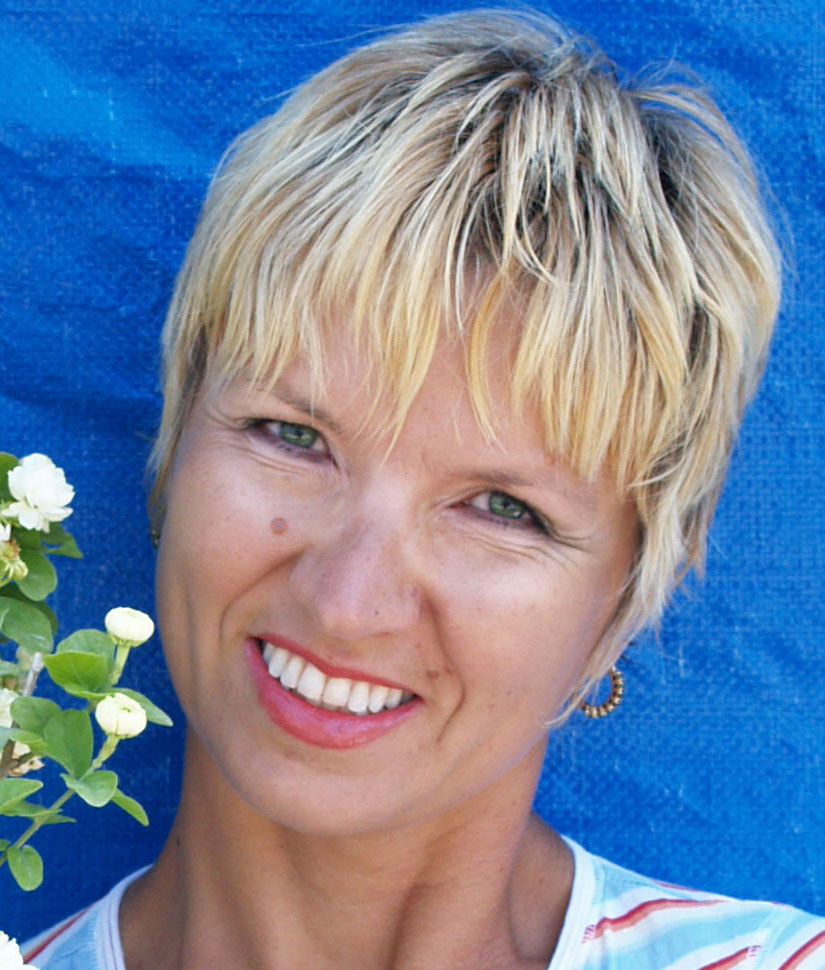 A word from the owner...
A word from the owner...
...When I first started growing tropical fruit trees, I noticed that
Lychee just can't be grown from seed, period. The seed germinates readily, a
little happy seedling grows like crazy... but only for the first couple weeks.
Then it stops. Then it shrinks. Then it dies.
My teacher, tropical fruit tree expert Murray Corman (Garden of Delights), made fun of me for growing Lychee
from seed, and explained his sarcasm with two words - "Need Mycorrhiza!" It
appears that in Nature, Lychee seedlings can only grow around its mother plant
which has this magic plant-friendly fungus around its roots! The only way to
succeed with some seedlings is using this amazing Nature symbiosis... Check
out Mycorrhiza - and try it, works 100% in all stubborn cases!
Myco Mix is an amazing underground secret to a better garden! This professional growing medium with Mycorrhiza is a must for establishing plants, recovering weak plants, and for transplanting applications, including seedlings and cuttings...Learn more...
Date:
Growing sapodilla in container and indoors
Q: I live in northwestern Washington state. I was wondering if I can grow a Sapodilla tree indoors in a container? Are they self-fertile, and which variety do you think would do best in a large container?
A: A: All Sapodillas are self-fertile. They can be successfully
grown in pots due to their slow growth rate and compact nature. The most
important requirement for successful growing and fruiting is a bright light, other
than that it is a very undemanding plant and is not fussy about watering.
The best variety for potting culture is Silas Woods which is a dwarf kind. This variety is the most profuse
producer, flowering and fruiting nearly year round providing bright light and
warmth. Although the fruit are smaller than other varieties and average 3-4"
size.
Sapodillas require regular fertilizer applications for good production.
We recommend Fruit Festival slow release fertilizer for the best results.
Date:
Featured plant. Acacia sphaerocephala - Bulls-Horn Acacia
Acacia (Vachellia) sphaerocephala - Bulls-Horn
The name of this cool unusual tree comes from the shape of the thorns which do indeed resemble the horns of a bull! The tree has a strong, symbiotic relationship with a species of an ant, Pseudomyrmex sphaerocephala for which it is the obligate habitat. The ants act as caretakers for the tree, and clear the ground and keep it free of any other plants and even prune surrounding branches of other trees that threaten to outshade the acacia. Without the protection of the ant colony, the acacia tree would fall vulnerable to chewing insects such as beetles or caterpillars, and surrounding trees and shrubs would quickly outcompete the acacia without the maintenance work of the ants to keep the tree safe.
Date:
Clay or plastic?
Q: I purchased an Avocado tree and planted it in a nice clay pot that I bought in a special pottery place. My tree looked very healthy when arrived but after a week leaves become droopy and started yellowing. I was advised this was a sign of over-watering. I watered the tree only once since I got it 2 weeks ago. What is wrong with my plant?
A: Unfortunately, the fancy pot may be the reason. Although clay pots (plain clay, without glaze) are considered to be good for root health, however, the root system is hard to control and difficult to check without disturbing. Clay pots with fancy glaze and painting may have a drainage problem. We have noticed that cone-shaped pots are usually problematic for drainage, and a plant always has "wet feet". Avocados like watering, but cannot tolerate sitting in water. If you want to avoid root problems and still like to keep a beautiful look of your treasure plant, you may use a fancy planter, where you can put your plant growing in a plain plastic black nursery pot of much smaller size than a planter: its vertical walls are perfect for drainage, and the pot is easy to remove for re-potting or inspecting. Make sure to put a layer of drainage rock on the bottom of the planter so your efforts won't be in vain.
Date:
Aries - 3/21-4/19
 Aries is a FIRE sign ruled by the planet Mars. Plants associated with
this element and planet very often have thorns or prickles. They can be also
spicy or bitter in flavor, or red in color. Because Aries rules the head,
eyes, and face, the plants for Aries purify the blood, stimulate the adrenal
glands, and/or are high in iron (Mars rules the mineral iron). Mars-ruled Aries
is assertive, energetic and fearless. Mars rules the red blood cells, the
muscles, and metabolic processes, as well as the motor nerves and the head. These
plants help you when you want more get-up-and-go and the courage to take on
the world.
Aries is a FIRE sign ruled by the planet Mars. Plants associated with
this element and planet very often have thorns or prickles. They can be also
spicy or bitter in flavor, or red in color. Because Aries rules the head,
eyes, and face, the plants for Aries purify the blood, stimulate the adrenal
glands, and/or are high in iron (Mars rules the mineral iron). Mars-ruled Aries
is assertive, energetic and fearless. Mars rules the red blood cells, the
muscles, and metabolic processes, as well as the motor nerves and the head. These
plants help you when you want more get-up-and-go and the courage to take on
the world.
Aries Zodiac lucky plants:
Governors plum, Hibiscus Karkade, Tapioca, Mamey Sapote, Ruda, Baobab, Euphorbia, Acanthus, Aloe, Caesalpinia, Erythrina, Opuntia, Dragon Fruit, Pachypodium, Pomegranate,Chilli peppers, Syngonium, Begonia, Geranium, Red Sandalwood, Jamiaca pepper (Pimenta, Allspice), Camphor, Jujube, Anise, Red Roses, Tiger Lily, Impatiens, Calendula, Tarragon, Ginger, Coriander, Basil,Ruda, Amaryllis, Wild Indigo, Gooseberries, Sesbania, Campsis, Red Oleander, Maple, Schotia brachypetala, Momordica, Coffee, Amla , Ephedra, Red Kapok.
For links to these plants and other signs information, see full Plant Horoscope.
